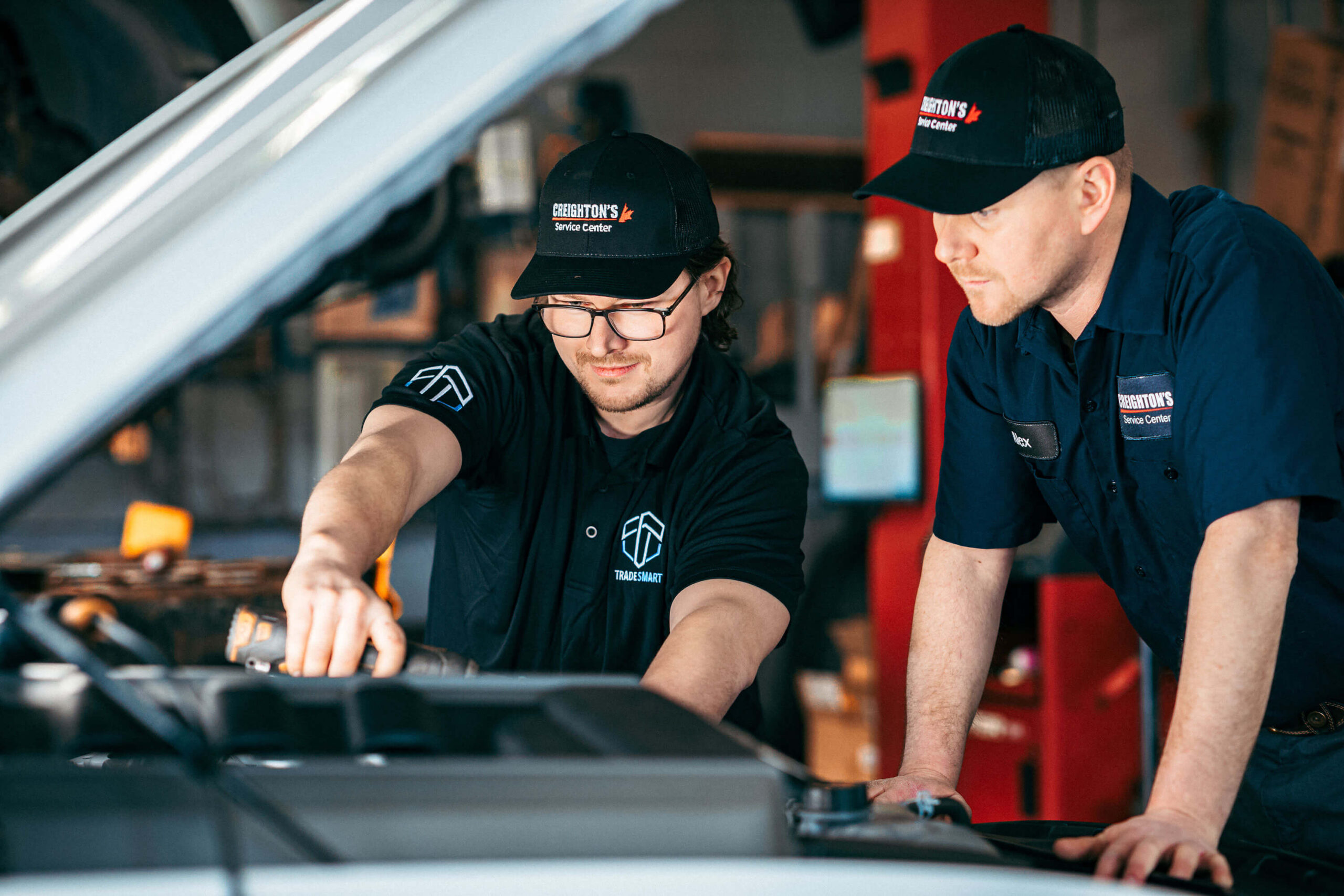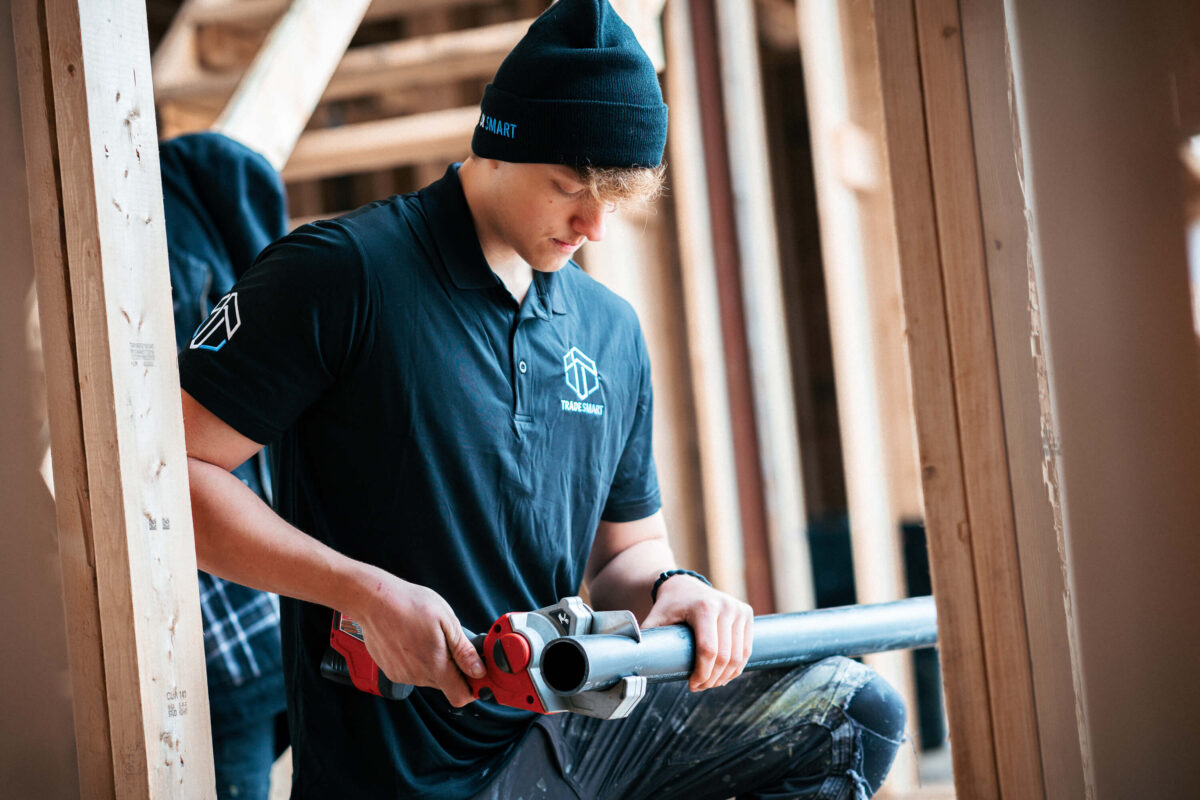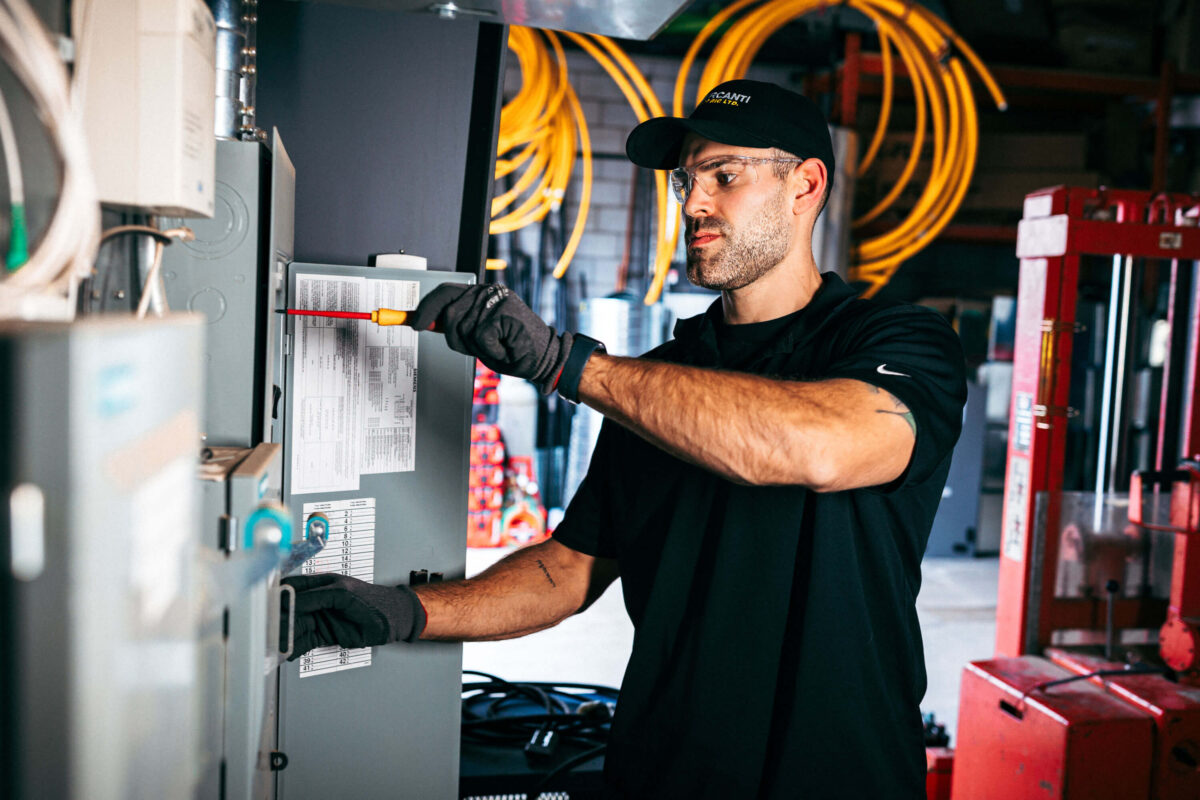Company Costs in Hiring Apprentices and Why it Matters
tradesmart23
on
July 10, 2024
Company Costs in Hiring Apprentices and Why it Matters

An apprenticeship is a form of education. Knowledge and skill are transmitted to students who earn a credential, and in many trades the credential is required in order to work in that trade. What is different about an apprenticeship vs college or university is where the learning takes place. And this means that the costs of training are distributed differently as well. This has implications for how easy or difficult it is to get an apprenticeship, and for the kind of training a student should pursue in order to become an apprentice. And because it can be so costly to take on an apprentice, this is another reason why students should develop their professional skills first, not their technical skills.
A Degree or Diploma Versus an Apprenticeship
In a traditional post-secondary degree, a college employs staff and teachers and has a physical infrastructure with classrooms and labs, libraries and perhaps residences. Students pay tuition and fees to cover the costs of these services and for the opportunity to learn what is required to earn the credential.
When students graduate, they enter a job market and companies sort through the various candidates and choose the ones they want to hire. Companies do not pay anything towards the skills and knowledge that their new employees have acquired. In other words, students (and governments) pay the full freight for traditional degrees and diplomas while the companies that hire these graduates pay nothing.
In standard economic theory, there is some justification for this distribution of costs. Most of the skills and knowledge that students learn in a college program are general and transferable. This means they can be used at any organization, so in theory companies should pay as little as possible for skills that an employee can readily take with them to a competitor.
In an apprenticeship, the costs of education are distributed differently. This is something that isn’t often talked about or understood, but it has a big impact on the availability of apprenticeships and how they are awarded. In apprenticeship education, companies take on the lion’s share of the costs so they are selective in who they educate and how they provide training. There are three main costs that companies incur when they take on apprentices: Supervision and instruction; decreased productivity, and; mistakes and corrections. These costs are comparable to, and in many cases greater than, the wages an apprentice earns.
Supervision and Instruction
Apprentices must be supervised and taught by journeypersons or masters because this is the central dynamic of the whole model. In most cases, this is an intensive form of learning with a low apprentice-to-master ratio. In Ontario in most compulsory trades, the ratio is 1:1 – one master for every apprentice. This is a political choice rather than a necessity because there are many fields where one expert can teach several novices at once. For instance, aspiring doctors serve as interns where the ratio is often 10 interns to one doctor, so there is no magical limit on this ratio.
When a journeyperson is supervising and teaching an apprentice, they are taking time from their regular job to provide these benefits to the apprentice. The company pays the journeyperson for this service, but it is not work that can normally be charged to a customer. You will rarely see an invoice with a charge for, “master to apprentice instruction, 2 hours” on it. Journeypersons are often paid $50/hour or more so the real cost to the company is significant.
Decreased Productivity
Technically, the fact that companies cannot charge a customer for the instructional work a journeyperson performs is a loss of productivity. However, there is another element here, and that is the slower pace of work that occurs when an apprentice is involved. Showing apprentices how to perform a task takes time, and the apprentice is never as good at it as the journeyperson until they gain years of experience. Sometimes companies can charge a customer for this, but if they have bid for a job, they often have to leave out the extra hours required in order for their bid to be competitive.
It is true that having an apprentice around can also increase productivity at times. Having an extra pair of hands around to haul goods and tools, clean up, organize and pack the van and many other tasks is beneficial and may offset the extra time it takes for the apprentice to perform other work. It is important to remember though, that companies can simply hire a labourer to do some of these supposedly menial tasks, without taking on that person as an apprentice. Apprentices earn more and their wages go up every year, so there is still a cost to hiring an apprentice. But that extra cost is worth it for the company and the apprentice if both sides are committed to the relationship. The company trains someone who can take on more and more responsibility and the apprentice gets a proper understanding of how important the “menial” work is in any project.
Mistakes and Errors
Entry-level employees make mistakes in every profession. In some jobs, these errors have little to no cost. For instance, college teaching assistants and graduate students often make mistakes in marking papers and exams until they get more experience. But these mistakes have no real cost. Students complain and the grade gets changed and life goes on. But it isn’t that simple in the trades. When an apprentice doesn’t dig a trench to the proper specifications, an entire job can be held up while the mistake is corrected. This is a real cost when the job is delayed, or a sub-trade has to charge more because of the hold-up. Similarly, if an apprentice stages the pipe or lumber and it blocks the access route, delays, cancellations and extra charges ensue.
Neither of these scenarios is catastrophic, but that is by design. No employer in their right mind is going to allow an unproven apprentice to perform a project where the costs are high. If a toilet isn’t seated properly and it leaks, or a wiring mistake starts an electrical fire, the damage quickly escalates. Companies have to minimize these risks for their own survival, so they limit the potential damage they can do until they prove themselves capable of handling more technical tasks.
Conclusion
An apprenticeship is a form of learning that is distinct from a college diploma. The emphasis is on learning the technical skills of a trade. We often point to the fact that the purpose of an apprenticeship is to learn the technical skills of a trade, and that apprentices get paid, as the distinguishing features of the model. While these are indeed features, it is also important to understand that the costs of apprenticeships are also different. Companies take on the majority of the costs in an apprenticeship, so they have to be selective about who they will accept. In practice, this means that companies will only take a chance on people who have demonstrated their ability to be a professional. This means that would-be apprentices should take programs that focus on professionalism over trade-specific skills if they want a company to make this investment in them.

We Need More People in the Skilled Trades
We Need More People in the Skilled Trades For decades, we’ve been hearing about the shortage of people entering the skilled trades, and it seems like the problem is getting worse, not better.

Your Chances of Getting an Apprenticeship in Ontario: By the Numbers
Your Chances of Getting an Apprenticeship: By the Numbers By any measure, Ontario is desperately short of skilled tradespeople. We need people now, but the first step in becoming a tradesperson is to

What’s the Highest Paying Trade in Ontario in 2024?
What’s the Highest Paying Trade in Ontario in 2024? Many of our prospective students ask some version of the question, “what is the highest paying trade in Ontario?” We understand the impulse behind

Contact the Team
Campus Hours
- Mon- Fri: 7am- 5pm
- Open House - See Schedule









